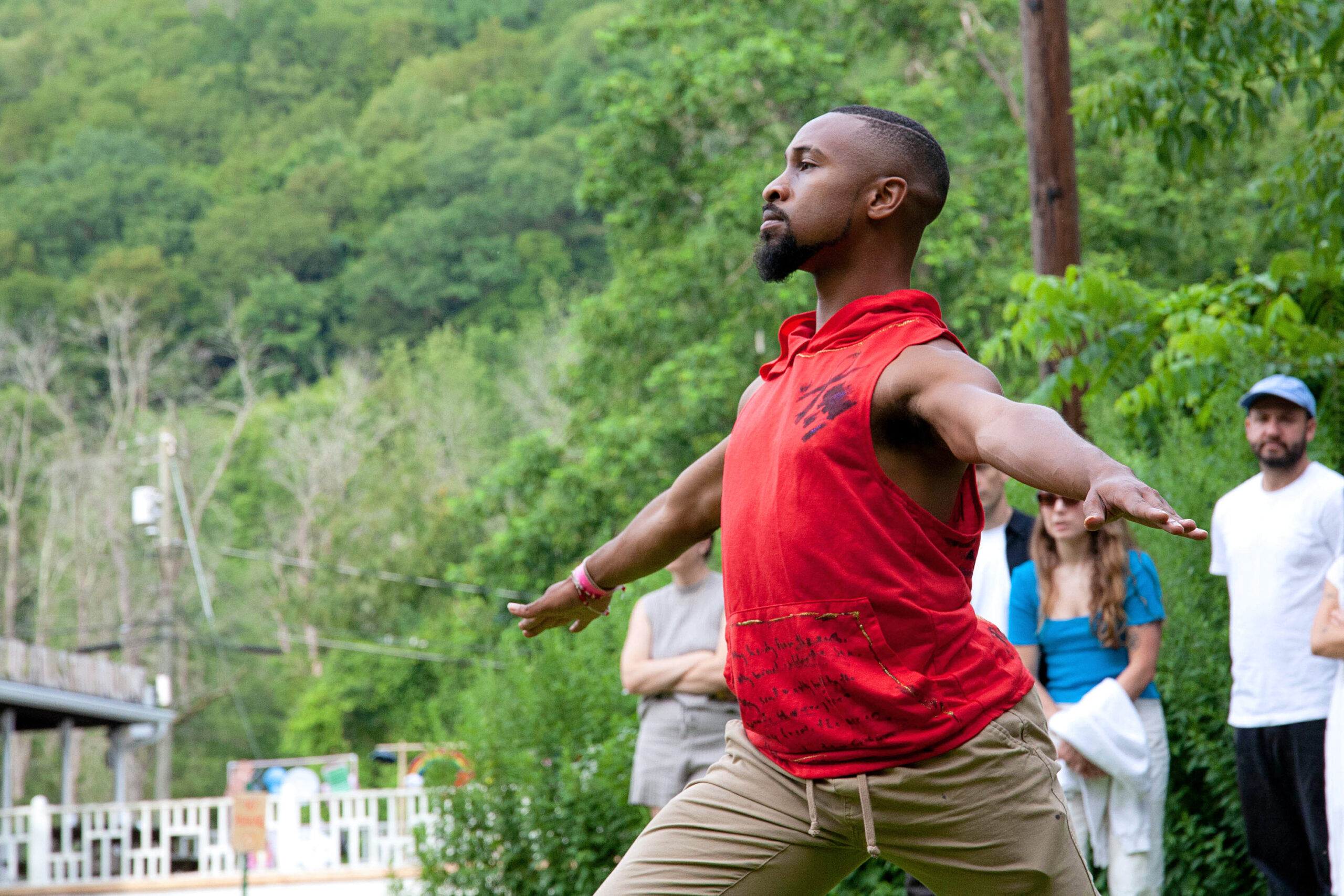Johnnie Cruise Mercer on the Premiere of The Decade from Hell…, His Long-In-Process Reflection on the Aughts
In an economy that’s always after the next new thing, Johnnie Cruise Mercer insists on continuity. His epic project, A Process Anthology: The Decade from Hell and the Decade that Followed Suite, began in 2017 with the first of what he terms “process memoirs,” evening-length dances that present the creative process and documentation of memory as the work itself. Centered around the art of letting go, Mercer’s eight process memoirs have swirled in a large constellation of multimedia collaborators to premiere in live, virtual, and hybrid formats across the country. The multi-year project culminates in two “DocuEpicWorks”: The first, The Decade from Hell…, premieres in New York City at Gibney, June 15–17. The second, And the Decade that Followed Suite, is planned for the 2025–26 season.
Which “Decade from Hell” are you referring to in this project?
The Decade from Hell… is actually based on an article of the same name from Time magazine about 2000 to 2010. The work is about shedding through those years. It’s about letting go of nostalgia and also embracing it. We’re finding ways to shepherd the audience through those years. After the show, we’ll be processing the material to create a film under the same title.
Tell us about the collaborative team you’ve been working with.
Everyone’s coming together to create a choreographic tapestry. With all the cohorts—the movement, music, and media—we started with conversations based on that decade, and, from there, we launched into a memory-weaving activity to find a foundation for the work.
I’ve been working with IAMI Collective on the music for about a year and a half; I grew up in Richmond, Virginia, with them, so we have a very long relationship together as collaborators and as friends. I started working with the choreographic players—Bria Bacon, Brooke Rucker, Alicia Morales, Alicia Dellimore, and Paulina Meneses—in November. Some of them are newer to me. We’ve been working with their memories, when they started dancing, the movement aesthetics we got introduced to in the early 2000s, and how that’s built to where they are now. Finally, the video and media team have done an archival process of the different forms of propaganda from that decade to build material for social media and for the film later.
What have you learned about revisiting these pop culture aesthetics from that decade?
I want to steer away from showing people what a thing is, and go closer to what things feel like. Though it’s about the decade, it’s about guiding people through the memories that come up as a collective. You’re not going to go see the stock market crash. Well, you may see a Britney Spears moment. But it’s more about guiding us through the emotions of places and reflecting on our feelings.
What kinds of feelings have come up?
There’s a feeling of quiet and stillness when everyone’s moving around you. Another feeling is like when Naruto [the anime character] runs, that bubblegum feeling. And another one: A lot of us were young adults in college at the end of that decade, so a lot of fist pumping or the feeling of being in a club or in a living room and dancing with people.
What does it feel like to try to evoke those specific feelings in today’s moment?
This work acknowledges our not too distant past so that we can heal things, move with, move through, and sit in where we are right now. That decade was so significant to how we are built. If we’re able to see that, maybe we can shift so many things right now.




